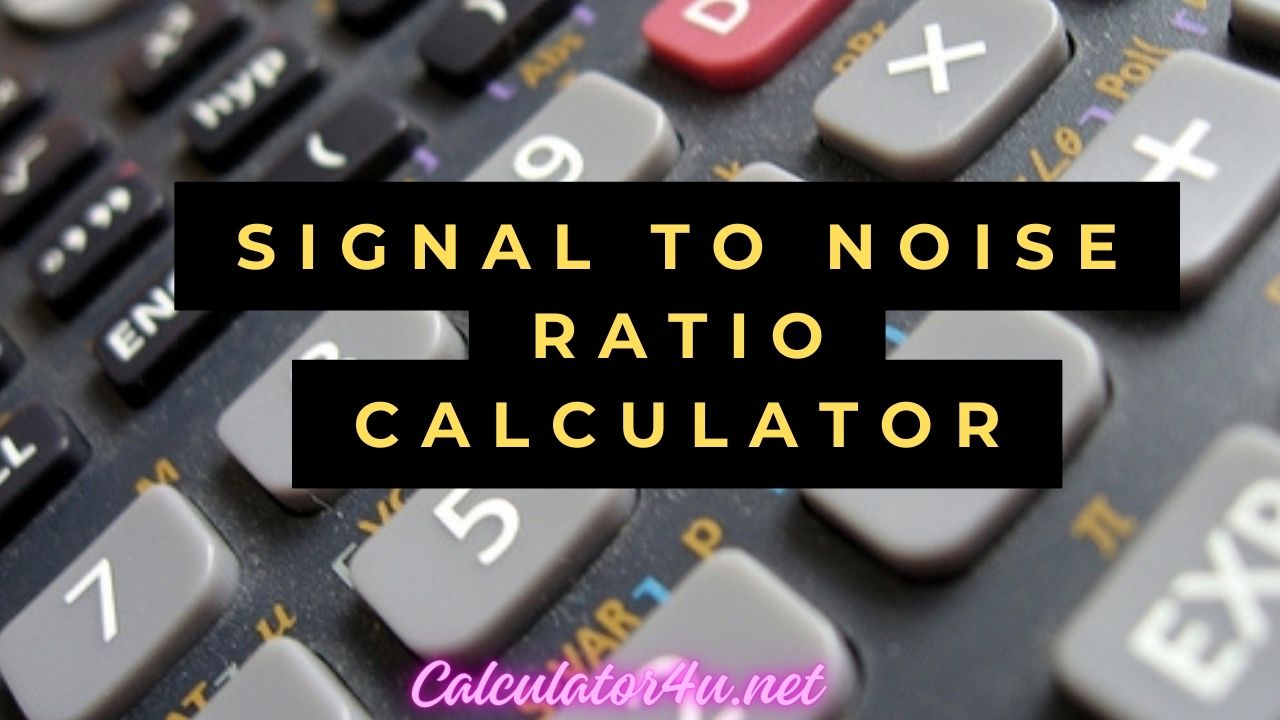Signal to Noise Ratio Calculator
- Series Calculator
- Semicircle Calculator
- Second Derivative Calculator
- Rounding To The Nearest Thousandth Calculator
Signal To Noise Ratio Calculator with Steps
Steps:
Signal To Noise Ratio (SNR):
Boost your understanding of signal quality with our Signal to Noise Ratio (SNR) Calculator! Dive into the essence of SNR, calculate ratios, understand its significance in various fields, and optimize your signal processing techniques with precision. Master SNR and elevate your technical expertise today!
Table of Contents
Signal To Noise Ratio Calculator
Welcome to our Signal to Noise Ratio (SNR) Calculator guide! The Signal to Noise Ratio (SNR) is a crucial metric that defines the quality and reliability of a signal in various technical applications, including telecommunications, audio engineering, and data analysis. In this article, we’ll delve into the fundamentals of SNR, explain the formula for calculating the ratio, and demonstrate how to use our specialized calculator for accurate SNR calculations.
Signal To Noise Ratio Calculator Overview
Understanding Signal to Noise Ratio (SNR)
The Signal to Noise Ratio (SNR) measures the level of a desired signal relative to the level of background noise. It is defined as the ratio of signal power to noise power and is expressed in decibels (dB). A higher SNR indicates a better quality and clarity of the signal, while a lower SNR suggests more noise interference.
SNR Formula and Calculation
The Signal to Noise Ratio (SNR) can be calculated using the following formula:
SNR (dB)=10×log10(Signal PowerNoise Power)SNR (dB)=10×log10(Noise PowerSignal Power)
Where:
- Signal Power: The power of the desired signal.
- Noise Power: The power of the background noise.
How the Calculator Works
Our SNR Calculator simplifies the process of calculating the Signal to Noise Ratio (SNR) by automating the mathematical calculations based on the provided signal and noise power values. Simply input the signal power and noise power, and the calculator will compute the SNR in decibels (dB) along with detailed explanations.
A “Signal-to-Noise Ratio (SNR) Calculator” is a tool used to determine the ratio of the power or amplitude of a signal to the power or amplitude of background noise in a given system. SNR is a measure used in science and engineering to quantify the level of a desired signal relative to background noise.
How to Use the Signal-to-Noise Ratio Calculator
- Input the value of the signal power or amplitude.
- Input the value of the noise power or amplitude.
- Click on the “Calculate” button to compute the SNR in decibels (dB).
Calculator:
Signal Power or Amplitude: [__________]
Noise Power or Amplitude: [__________]
[Calculate]
Example:
Let’s say you have a signal with a power of 50 units and background noise with a power of 10 units.
Input 50 into the “Signal Power or Amplitude” field.
Input 10 into the “Noise Power or Amplitude” field.
Click “Calculate.”
The calculator will compute the SNR in decibels (dB), providing you with a numerical value that indicates the quality or clarity of the signal relative to the noise.
Step-by-Step Guide to Using the Calculator
- Input Signal Power: Enter the power of the desired signal.
- Input Noise Power: Enter the power of the background noise.
- Initiate Calculation: Click the “Calculate” button to compute the Signal to Noise Ratio (SNR) in decibels (dB).
- Review Result: Examine the calculated SNR value and detailed explanations provided by the calculator.
Practical Applications
Understanding and calculating the Signal to Noise Ratio (SNR) has practical applications in various fields such as:
- Telecommunications: Evaluating communication system performance and signal integrity.
- Audio Engineering: Assessing audio quality, clarity, and noise reduction techniques.
- Data Analysis: Analyzing data quality, reliability, and optimizing data transmission.
- Medical Imaging: Improving image quality, resolution, and diagnostic accuracy.
Advantages of Using the Calculator
- Accuracy: Provides precise SNR calculations based on mathematical formulas and algorithms.
- Efficiency: Saves time and effort by automating the calculation process and providing detailed explanations.
- Versatility: Supports calculations for various technical scenarios and applications, accommodating different signal and noise power values.
FAQs
Q: What is Signal to Noise Ratio (SNR)?
A: The Signal to Noise Ratio (SNR) measures the level of a desired signal relative to the level of background noise, indicating the quality and reliability of the signal.
Q: How do I calculate the Signal to Noise Ratio (SNR)?
A: The Signal to Noise Ratio (SNR) can be calculated using the formula:
SNR (dB)=10×log10(Signal PowerNoise Power)SNR (dB)=10×log10(Noise PowerSignal Power)
Q: What are the practical applications of SNR?
A: SNR has practical applications in telecommunications, audio engineering, data analysis, and medical imaging for evaluating system performance, signal quality, and reliability.
Q: Can I use the calculator for various technical scenarios?
A: Yes, the calculator supports calculations for various technical scenarios and applications by accommodating different signal and noise power values, providing versatile solutions.
Q: How do I interpret the SNR value?
A: A higher SNR value indicates better signal quality and clarity, while a lower SNR value suggests more noise interference and potential signal degradation.
Conclusion
In conclusion, our Signal to Noise Ratio (SNR) Calculator offers a user-friendly and efficient tool for calculating the SNR, aiding in the evaluation and optimization of signal quality in various technical applications. By following the steps outlined in this guide and utilizing the calculator’s features, you can enhance your technical expertise, understand the significance of SNR, and apply this knowledge to improve system performance, reliability, and quality.

